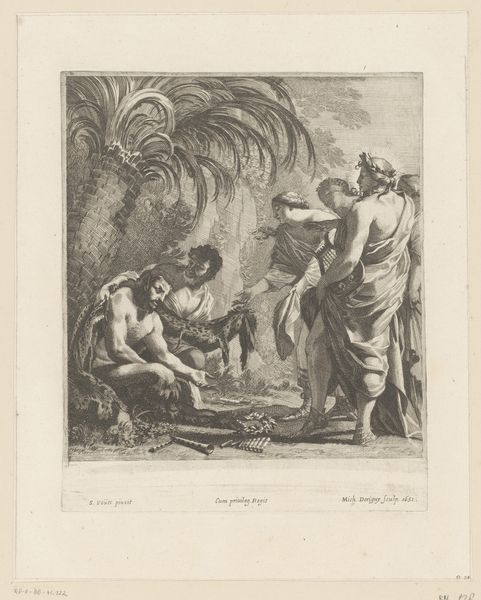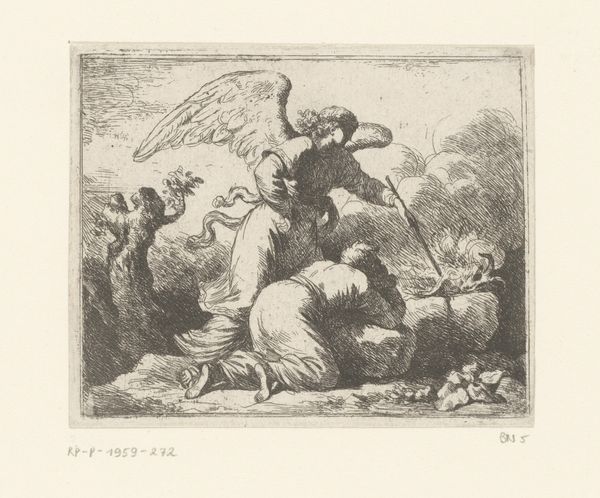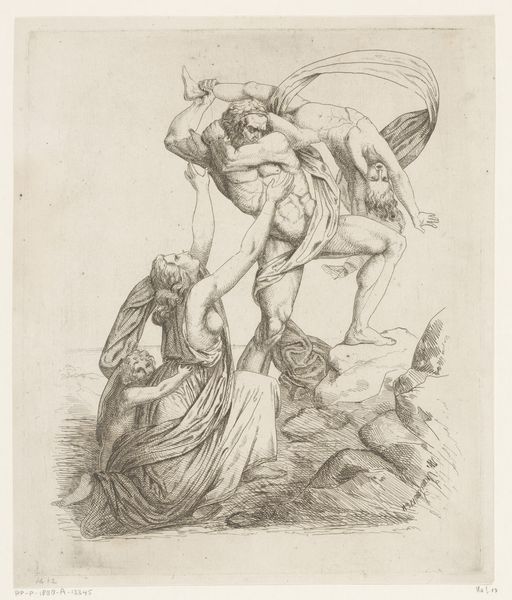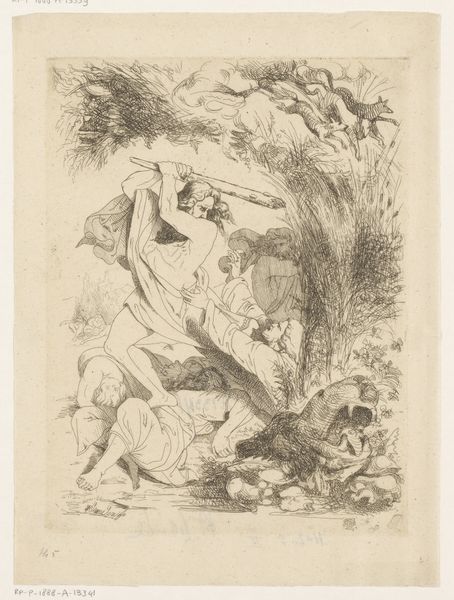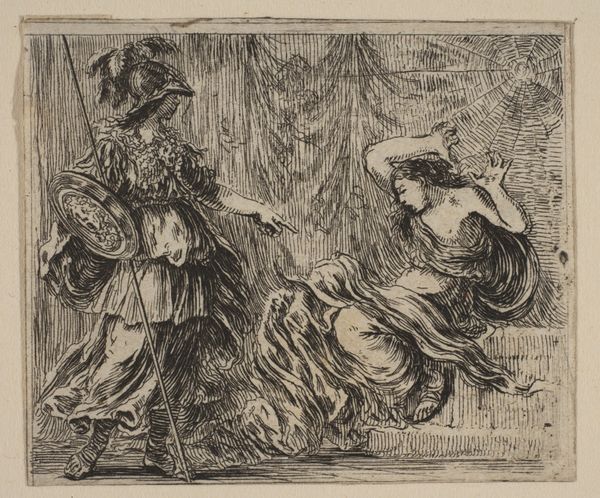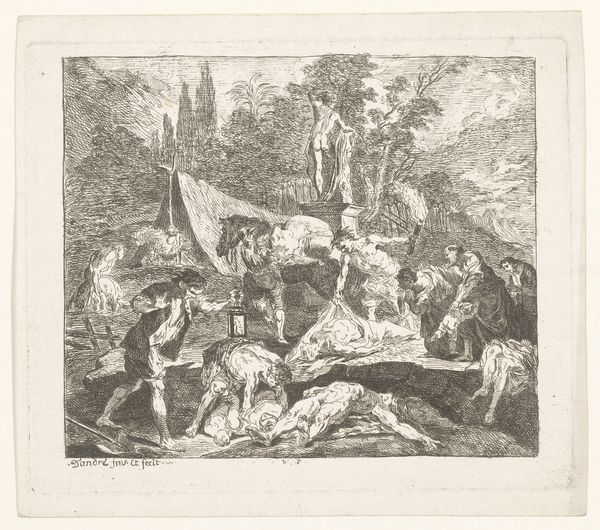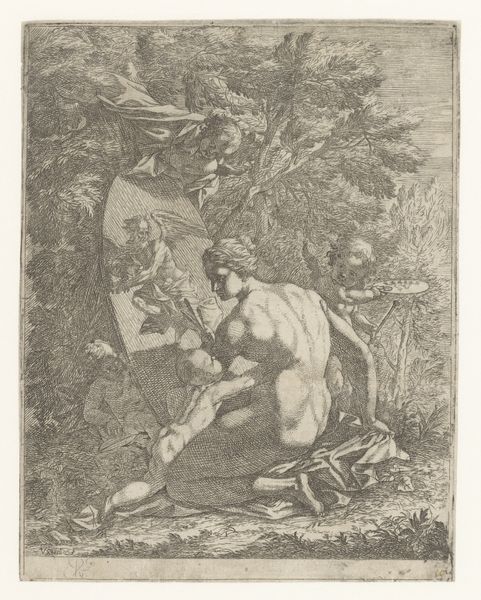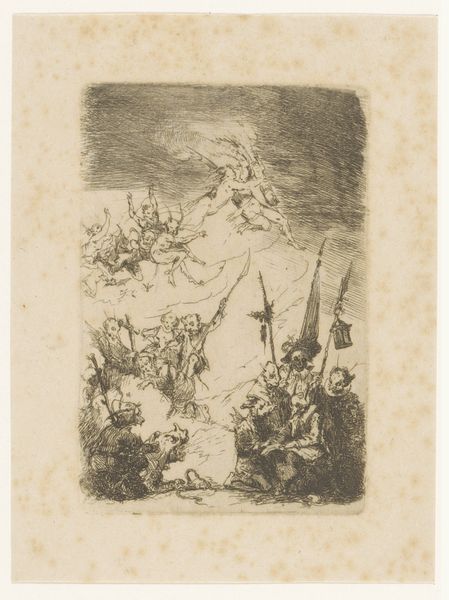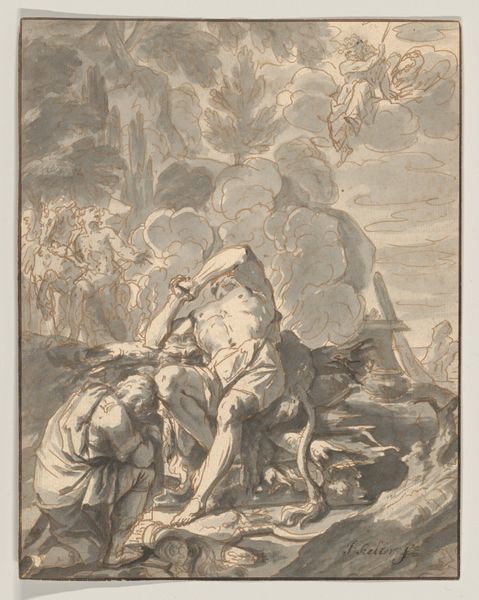
print, engraving
#
narrative-art
#
baroque
# print
#
figuration
#
history-painting
#
engraving
Dimensions: height 110 mm, width 129 mm
Copyright: Rijks Museum: Open Domain
Curator: This engraving presents a scene brimming with pathos; the distraught figure commands our immediate attention. Editor: Absolutely, there’s a somber quality evoked by the monochromatic palette and delicate lines, yet a divine intervention appears imminent. This feels charged. Curator: Precisely! The print is entitled "Aartsengel Michaël wijst Hagar een bron," dating from between 1641 and 1711, by Johann Philipp Lemke. It illustrates the biblical story of Hagar. Editor: The figures possess an ethereal, almost weightless quality, enhanced by their placement within the composition. The angel’s gesture – what does it signify, beyond the immediate narrative? Curator: Contextually, Hagar, the Egyptian handmaid of Sarah, Abraham's wife, is banished to the desert with her son Ishmael. Their plight speaks to the marginalized in patriarchal societies and the often-invisible struggles of women of color throughout history. It represents dispossession. Editor: Hagar's averted gaze, clasped hands... it signals desperation, but also perhaps a hint of supplication. While the angel’s posture—a tender hand on Hagar’s shoulder—serves as a reminder of faith and compassion. Curator: Indeed. It’s interesting how the visual vocabulary employed, rooted in Baroque conventions, creates a sense of theatricality. But it allows for a complex layering of interpretations around power and faith, echoing debates that remain potent. What is emphasized, and what is omitted? Editor: The engraving underscores the eternal appeal and adaptability of biblical narratives. By distilling profound human emotions through established religious symbols, Lemke presents not merely a historical tableau but a contemplation on despair, hope, and divine intervention. Curator: It invites viewers to question not just Hagar’s personal experience, but also our own contemporary landscape shaped by historical injustices. This prompts us to look deeper at contemporary social dynamics, reflecting the experience of migrant women and people of color still encountering modern versions of 'the desert'. Editor: It’s interesting how symbols, even in a relatively small-scale print like this, possess enduring significance and the capacity to be reframed by evolving societal views and moral priorities. Curator: Well said. A testament to art's ability to not just reflect history, but also inspire introspection on our shared humanity, reminding us of resilience and continuous dialogues around justice and equity.
Comments
No comments
Be the first to comment and join the conversation on the ultimate creative platform.

